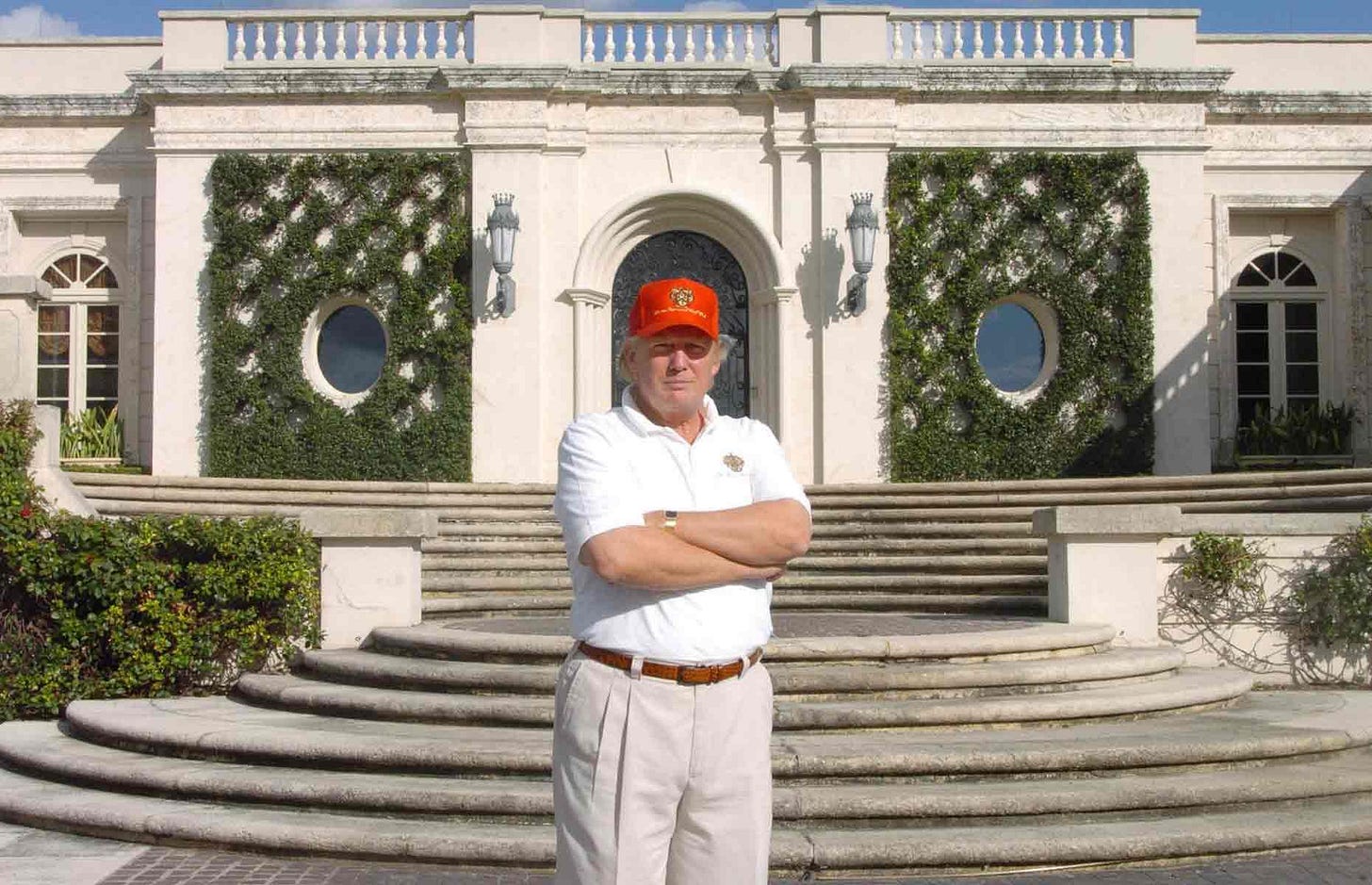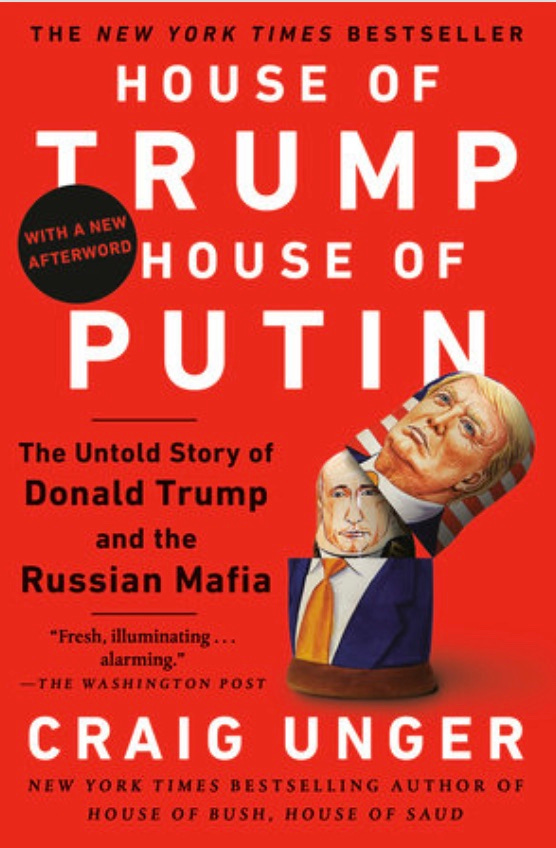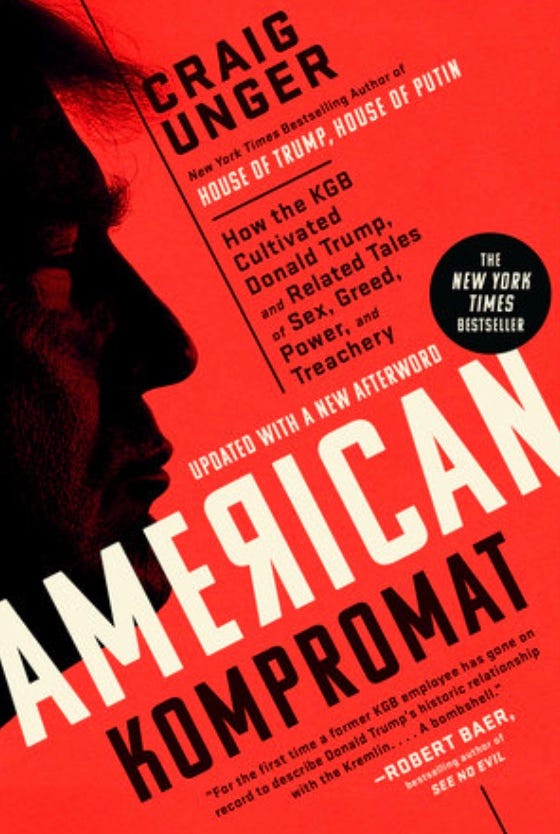#22. That's What Friends are For: Inside Dmitry Rybolovlev's $95 Million Trump Bailout (2008)
This is the story of L'Amitié--friendship, that is--and how, when Donald Trump was in real financial trouble, a Russian billionaire mysteriously rushed to his aid.

In July 2008, as the U.S. economy was teetering on the brink of collapse, Donald Trump, who had already survived six bankruptcies, was enmeshed in his own financial crisis, and moved forward with a plan that he thought would make a killing. Four years earlier, Trump had acquired a lavish Palm Beach estate known as Maison de L’Amitié at a bankruptcy auction for $41 million. Over the next few years, Trump repeatedly boasted about the lavish improvements he had made to L’Amitié, presumably so he could cash out at a much higher price.
But in fact, Trump had only made a few cosmetic changes. “I’d been in the house before, at one of [the previous owner’s] charity parties, and Trump had hardly changed anything—just put on a couple of coats of paint,” gossip columnist Jose Lambiet told The Miami Herald. “Even that — well, he told us the fixtures in one of the bathrooms were gold, but as he walked away, I scratched a faucet with my fingernails and it was just gold-covered paint.”
Lambiet added that had visited the lavish homes of many socialites who had more money than taste, but the Maison de l’Amitie in a class by itself. “It was just terrible-looking, really gaudy,” he said. “Nothing fit together — it was sort of haphazard inside….I thought, he’s never gonna sell this. And he didn’t, the house stayed on the market for a couple of years.
And then along came a Russian oligarch named Dmitry Rybolovlev to take the extravagant estate off Trump’s hands for an astonishing $95 million—more than twice what Trump had paid for it.
A fertilizer tycoon with a controversial past, Rybolovlev bought the property through a family trust, never lived in it, and eventually secured permission to tear it down.
But that’s not the whole story. The story began earlier in 2004 when it was Jeffrey Epstein, the late sex criminal and financier who died in his jail cell in 2019, who was committed to buying the Maison de l’Amitié. As I wrote in American Kompromat, Trump’s sudden and surprising purchase of the property played a key role in rupturing Trump’s longterm friendship with Jeffrey Epstein:
“The property, a nearly sixty-two-thousand-square-foot neoclassical palace, had once been owned by Leslie Wexner, the billionaire retailer who was so close to Epstein. Epstein had his heart set on the house, but he planned to make at least one major renovation project once he bought it: He wanted to relocate the swimming pool, and he brought Trump to the property to give him advice on how to do it. But before the sale was finalized, Epstein was horrified to see that Trump, who was still underwater financially from his Atlantic City bankruptcies, outbid him with an offer of more than $41 million for the property. The purchase was financed by Deutsche Bank, which was already holding dubious loans for Trump. Epstein was apoplectic and became even more enraged when Trump soon thereafter put the house up for sale for $125 million. Finally, Trump sold the house to Russian oligarch Dmitry Rybolovlev for $96 million in 2008—never having lived there—and Epstein threatened to sue him. The two men never spoke again. And from then on, whenever Epstein’s name was mentioned to Trump, the whole tenor of the conversation instantly changed.”

On the surface, Rybolovlev’s willingness to pay top dollar might appear to be yet another example of Trump’s putative dealmaking savvy Trump. But the timing, the inflated price, and the identity of the buyer suggest a far murkier story—one that fits into a broader, troubling pattern of Russian capital flowing into Trump’s properties and raises questions that have followed him into his political life.
By 2008, as his Atlantic City casinos were bleeding money and heading toward bankruptcy, Trump was under even more financial pressure thanks to $334 million loan due to Deutsche Bank for his Trump International Hotel & Tower in Chicago—$40 million of which Trump had personally guaranteed. Then, seemingly out of nowhere, came Rybolovlev’s $95 million cash purchase of Maison de l’Amitié—just months before the loan came due. The transaction netted Trump more than $50 million in profit, more than enough to pay Deutsche Bank the amount he personally owed.
So, who is Dmitry Rybolovlev, and why did he pay such an inflated price for a home he would never use? By 2008, Rybolovlev was one of the richest men in Russia, having built his fortune as chairman of Uralkali, a dominant force in the global potash fertilizer market. Like many of the oligarchs who emerged from Russia’s chaotic post-Soviet era, his wealth was shadowed by controversy. In the 1990s, he was jailed on charges of arranging a contract killing of his business partner—charges for which he was later acquitted—but the experience left him wearing a bulletproof vest and eventually relocating his family to Switzerland.
As his wealth soared, he began snapping up assets around the world: an $88 million Manhattan penthouse, a Hawaiian estate previously owned by Will Smith, and an art collection acquired through now-disgraced dealer Yves Bouvier. According to Politico, during a bitter 2008 divorce, Rybolovlev’s wife accused him of hiding billions in assets using offshore trusts—specifically citing the Palm Beach mansion. The Panama Papers later confirmed he had shifted valuable assets, including real estate and art, into opaque shell companies during the dispute.
Rybolovlev’s ascent to extreme wealth was the result of the Mafia state created by Putin, a system where billionaires survived only by staying in the Kremlin’s good graces and carrying out requests by the state. In 2010, he sold his stake in Uralkali to a group of oligarchs seen as having closer ties to the Kremlin. While Rybolovlev is not considered a Putin confidant, his wealth—like that of many Russian billionaires—was contingent on remaining in good standing with the Kremlin and security services. His 2008 purchase of Trump’s Palm Beach estate wasn’t improper, but the opacity surrounding the deal—including the use of a trust, the above-market price, and the fact that the home was never occupied—raised red flags among financial watchdogs and some U.S. investigators.
Senator Ron Wyden(D-OR), who serves on both the Senate Finance and Intelligence Committees, formally requested in 2018 that the Treasury Department release any Suspicious Activity Reports or due diligence materials related to the sale. Special Counsel Robert Mueller’s team was also said to have scrutinized the deal as part of its broader Russia investigation. The central question was whether this was simply a lucky real estate flip for Trump, or whether it served another purpose—a disguised financial rescue, a covert political favor, or a means of influence.
The 2008 Rybolovlev transaction did not occur in isolation. Around the same period, Trump-branded buildings in Florida’s Sunny Isles Beach and Hollywood, FL, saw a wave of Russian buyers acquiring multimillion-dollar condos, many of them via shell companies. Trump Organization executives openly courted wealthy Russian clients during this period, and Donald Trump Jr. bragged in 2008 that "Russians make up a pretty disproportionate cross-section of a lot of our assets." He added "we see a lot of money pouring in from Russia."
By the time Trump ran for president in 2016, these questions of financial exposure and foreign influence were no longer abstract. His long history of opaque deals with wealthy Russians, particularly those with access to offshore wealth and political influence, became central.
While Rybolovlev has stayed mostly out of U.S. political controversies since the 2008 mansion purchase, the shadow of that $95 million wire transfer has never fully faded.
Trump, for his part, has always dismissed concerns about the transaction. When asked about Rybolovlev, he insisted he had no relationship with the man, had never met him, and didn’t know anything about him. "He just happened to be from Russia," Trump told Politico. “I never met him. He was represented by a broker,” Trump said in the interview. “I heard good things about him in many ways, and about his family.” Trump added that Rybolovlev’s nationality was not relevant to him. “He just happened to be from Russia. He’s a rich guy from Russia.”
But in the end, Rybolovlev’s purchase of L’Amitié sale was more than just a high-priced real estate transaction. It was a pivotal financial moment that may have helped keep Trump afloat at a time of mounting debt and economic uncertainty.
Cast of Characters
Dmitry Rybolovlev
Russian oligarch and former owner of Uralkali, one of the world’s largest fertilizer producers. Known for extravagant spending and murky offshore dealings, Rybolovlev bought Trump’s mansion through a trust, never moved in, and later demolished it.
If you have tips, leads, or insights, please reach out—I am always looking for new information. And don’t forget to comment and share your thoughts!
For the complete story on how Trump became a Russian asset, buy House of Trump, House of Putin, and/or American Kompromat. And don’t miss my latest book, Den of Spies!
House of Trump, House of Putin
The Untold Story of Donald Trump and the Russian Mafia
American Kompromat
How the KGB Cultivated Donald Trump, and Related Tales of Sex, Greed, Power, and Treachery
Den of Spies
Reagan, Carter, and the Secret History of the Treason That Stole the White House









This story is one of my favorite " Horror" stories of Trump / Russia. The other one is about V. Ivankov being on the run and the FBI finding him in a Trump tower property. Hiding. But of course he was.
Nobody tells these stories like you do, Craig. You are the best. I am just now seeing the new book by you !!!!! Count me in as one of the lucky owners of one.
All my best and warmest wishes to you.
Thank you.
Stacy O 💖